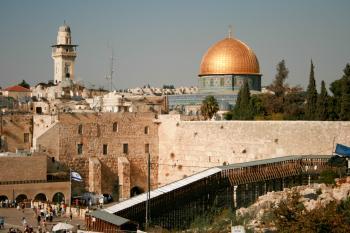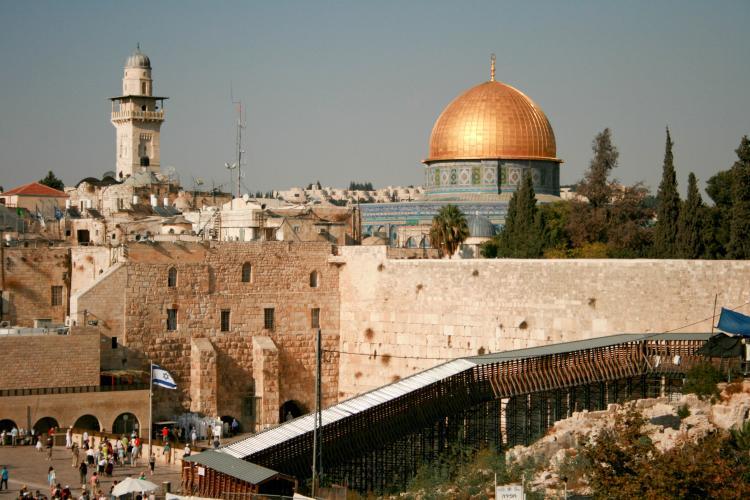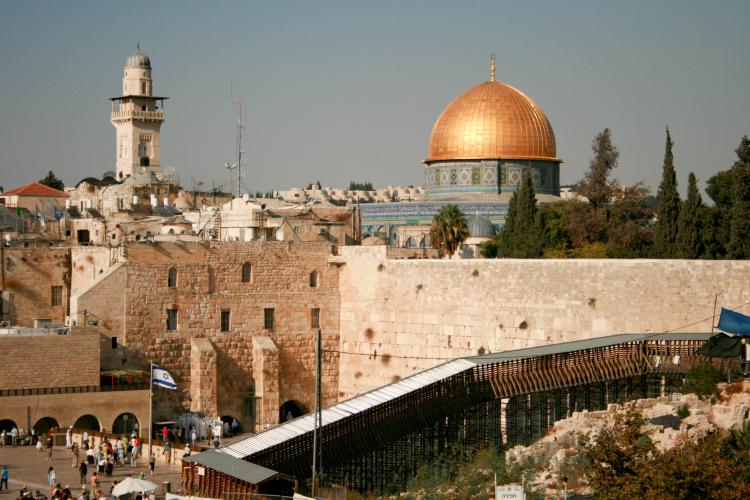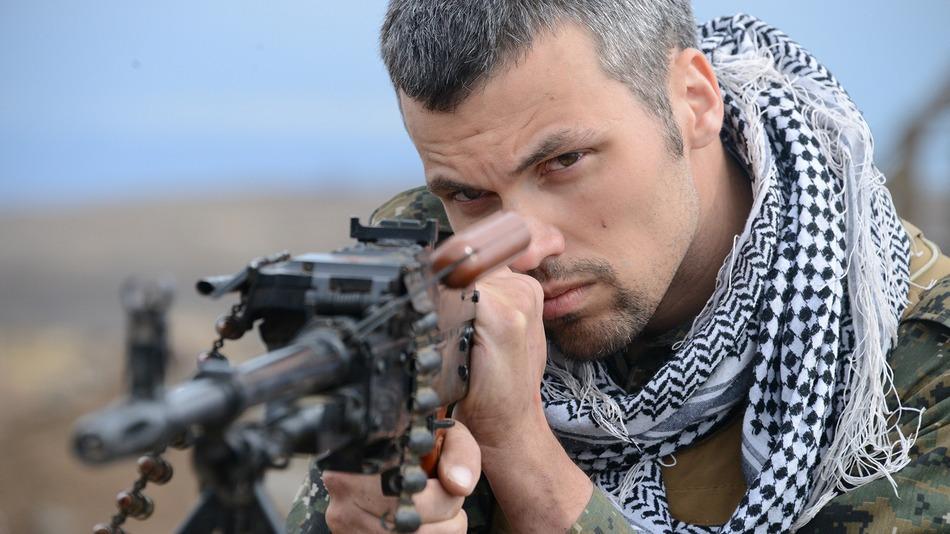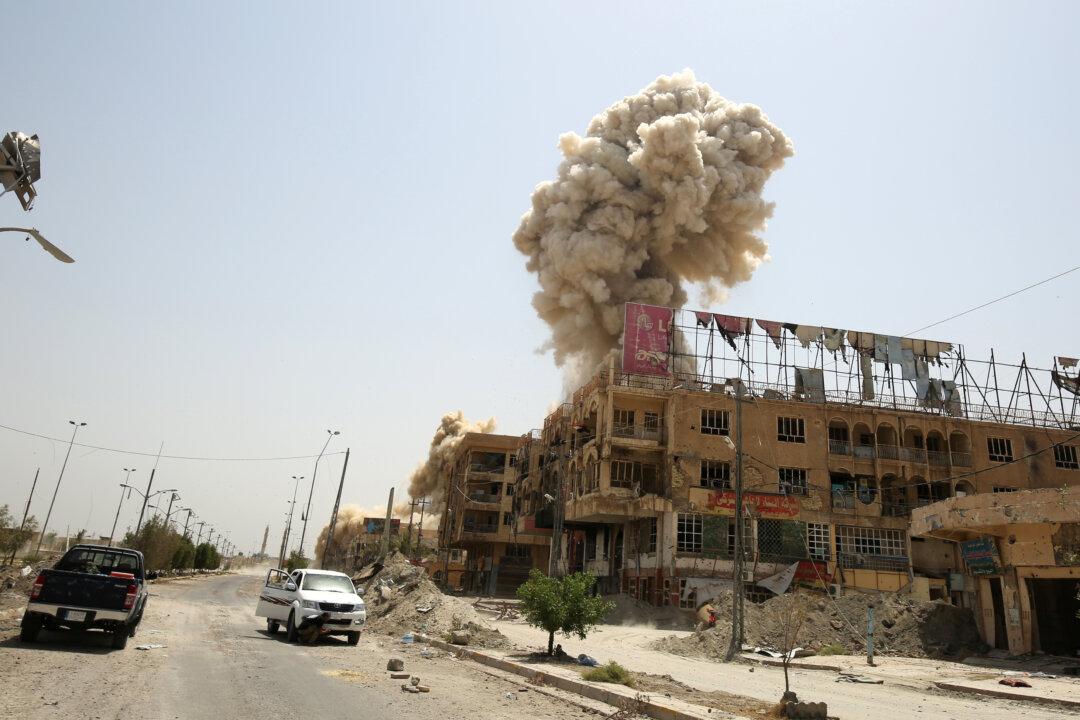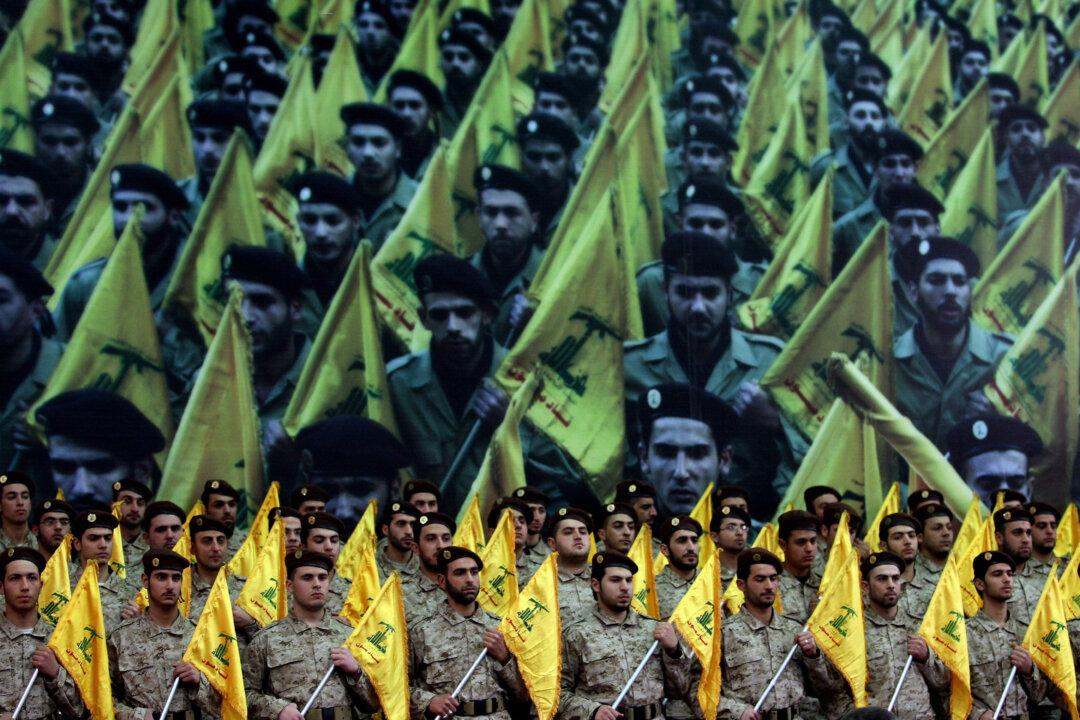JERUSALEM—Israel is full of walls of all ages and sizes, both real and imagined. Some walls were built for defense from invaders hundreds or thousands of years ago. There are many that survived, but most are crumbling relics that haven’t stood the test of time.
It brings to mind the expression that the walls have ears. Israeli walls have mouths that come to life in the people who tell stories of what was, and what they think or hope will come to be.
At the famed Western Wall, people gather every day, sometimes by the thousands. It’s the remains of an outer wall that surrounded a Jewish temple, which was destroyed twice—the last time was 2,000 years ago. Many Jewish people often put historical stories into context by saying “first temple period” or “second temple period.”
Both temples took on such a mystique over time that modern people still go to the wall—the same wall—to worship. Nobody is allowed to get close to the area without “proper attire,” which includes security personnel who force women to cover their bare shoulders, or leave. People stand before the wall and pray, sometimes weeping, sometimes rocking, surrendering to deep prayer.
Sometimes they write wishes or prayers on pieces of paper and stick them in the wall’s crevices. Women and men are not allowed to stand together, and there are signs everywhere reminding people to respect the site. But it’s just the outer western wall of the temple’s complex, not even part of the building. It’s just a shred of the past.
On a large plaza above the Western Wall is an area controlled by the Arabs and the site of their mosque, Al-Aqsa. Even as a non-Jewish foreign tourist, there are some days that the political situation is too tense to get access to this area. Al-Aqsa sits at the edge of an enormous, quiet plaza. On the surface it is a place of worship, but like the Western Wall, it has become a place far removed from a world where people live together.
But what really divides people at Al-Aqsa and the Western Wall are political and religious dogmas, not structures of stone. I have heard it said repeatedly that if World War III ever breaks out, this is where it will start.
Not far from Al-Aqsa and the Western Wall is the green line that divides east and west Jerusalem, Arab from Jew. Along part of the line will run a light rail train slated to start operating within the year. The train’s administrator recently surveyed city residents to ask whether they are uncomfortable that the route includes stops in several Arab neighborhoods, according to the Israeli newspaper Ha’aretz. Some people are calling the question racist, but the fact that it was asked at all demonstrates symptoms of a great cultural divide.
In fact, even the recent news that the Israelis and the Palestinian Authority are going to begin direct peace talks hasn’t made the mood more hopeful. There is such a burden of history and tallies of losses along the way that people seem to find it hard to forget on what side of the wall they belong.
One glimmer of hope I’ve heard is in an expression people sometimes use when talking about the situation here, “I hope that peace will break out.” It’s such a simultaneously odd and hopeful statement, as though peace were just bubbling beneath the surface and all the walls, both real and imagined, could be overcome as easily as a bomb could drop or a gun could be fired, without sacrifice or compromises on both sides. It says everything about how accustomed both Israelis and Arabs have become to living behind and between walls, and how much it has obscured their view of reality.
It brings to mind the expression that the walls have ears. Israeli walls have mouths that come to life in the people who tell stories of what was, and what they think or hope will come to be.
At the famed Western Wall, people gather every day, sometimes by the thousands. It’s the remains of an outer wall that surrounded a Jewish temple, which was destroyed twice—the last time was 2,000 years ago. Many Jewish people often put historical stories into context by saying “first temple period” or “second temple period.”
Both temples took on such a mystique over time that modern people still go to the wall—the same wall—to worship. Nobody is allowed to get close to the area without “proper attire,” which includes security personnel who force women to cover their bare shoulders, or leave. People stand before the wall and pray, sometimes weeping, sometimes rocking, surrendering to deep prayer.
Sometimes they write wishes or prayers on pieces of paper and stick them in the wall’s crevices. Women and men are not allowed to stand together, and there are signs everywhere reminding people to respect the site. But it’s just the outer western wall of the temple’s complex, not even part of the building. It’s just a shred of the past.
On a large plaza above the Western Wall is an area controlled by the Arabs and the site of their mosque, Al-Aqsa. Even as a non-Jewish foreign tourist, there are some days that the political situation is too tense to get access to this area. Al-Aqsa sits at the edge of an enormous, quiet plaza. On the surface it is a place of worship, but like the Western Wall, it has become a place far removed from a world where people live together.
But what really divides people at Al-Aqsa and the Western Wall are political and religious dogmas, not structures of stone. I have heard it said repeatedly that if World War III ever breaks out, this is where it will start.
Not far from Al-Aqsa and the Western Wall is the green line that divides east and west Jerusalem, Arab from Jew. Along part of the line will run a light rail train slated to start operating within the year. The train’s administrator recently surveyed city residents to ask whether they are uncomfortable that the route includes stops in several Arab neighborhoods, according to the Israeli newspaper Ha’aretz. Some people are calling the question racist, but the fact that it was asked at all demonstrates symptoms of a great cultural divide.
In fact, even the recent news that the Israelis and the Palestinian Authority are going to begin direct peace talks hasn’t made the mood more hopeful. There is such a burden of history and tallies of losses along the way that people seem to find it hard to forget on what side of the wall they belong.
One glimmer of hope I’ve heard is in an expression people sometimes use when talking about the situation here, “I hope that peace will break out.” It’s such a simultaneously odd and hopeful statement, as though peace were just bubbling beneath the surface and all the walls, both real and imagined, could be overcome as easily as a bomb could drop or a gun could be fired, without sacrifice or compromises on both sides. It says everything about how accustomed both Israelis and Arabs have become to living behind and between walls, and how much it has obscured their view of reality.
